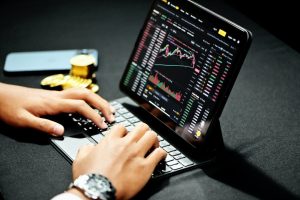Forex trading has become increasingly popular over the years, with many traders looking for ways to automate their trading strategies. One way to do this is by programming a forex robot. A forex robot is an automated trading system that uses algorithms to execute trades on behalf of the trader. In this article, we will explain how to program a forex robot.
Step 1: Define Your Trading Strategy
The first step in programming a forex robot is to define your trading strategy. Your strategy should be based on your trading style, risk tolerance, and market analysis. You need to determine the entry and exit points for your trades, the type of orders you will use, and the risk management rules.
Step 2: Choose a Programming Language
Once you have defined your trading strategy, you need to choose a programming language to use. Some popular programming languages used in forex robot programming include MQL4, MQL5, and Python. MQL4 and MQL5 are specifically designed for the MetaTrader platform, while Python is a general-purpose programming language.
Step 3: Learn the Programming Language
Before you start programming your forex robot, you need to learn the programming language you have chosen. There are many resources available online to help you learn the language, including video tutorials, online courses, and books. You should also familiarize yourself with the MetaTrader platform if you have chosen to use MQL4 or MQL5.
Step 4: Write the Code
Once you have learned the programming language, you can start writing the code for your forex robot. The code should include the rules for your trading strategy, including the entry and exit points, the type of orders you will use, and the risk management rules. You should also include any indicators or other tools you will use to analyze the market.
Step 5: Test the Forex Robot
Once you have written the code for your forex robot, you need to test it to make sure it works as intended. You can use a backtesting tool to test your robot on historical data. This will help you identify any errors in your code and make any necessary adjustments.
Step 6: Optimize the Forex Robot
After testing your forex robot, you may need to optimize it to improve its performance. This involves tweaking the parameters in your code to improve the profitability and reduce the risk of your trading strategy. You can use optimization tools to help you find the optimal settings for your robot.
Step 7: Deploy the Forex Robot
Once you have tested and optimized your forex robot, you can deploy it on a trading platform. You will need to connect your robot to a broker’s API to enable it to execute trades. You should also monitor your robot’s performance and make any necessary adjustments to ensure it continues to perform well.
Conclusion
Programming a forex robot can be a daunting task, but it can also be a rewarding one. By following these steps, you can create a forex robot that can help you automate your trading strategies and potentially increase your profits. Remember to test and optimize your robot before deploying it on a live trading account, and always monitor its performance to ensure it continues to perform well.





